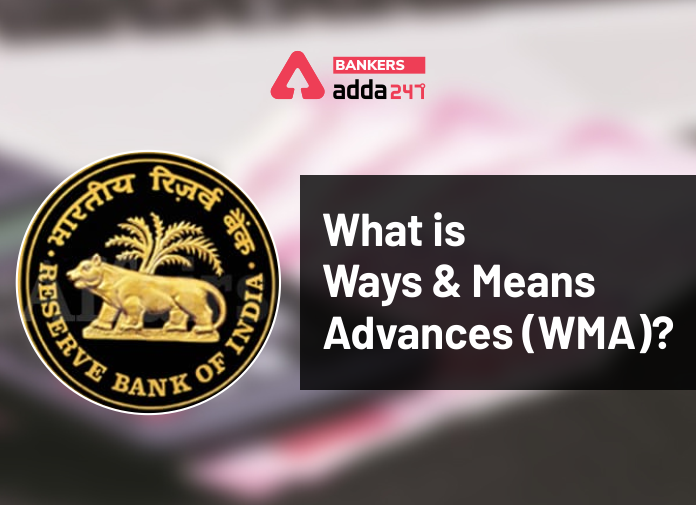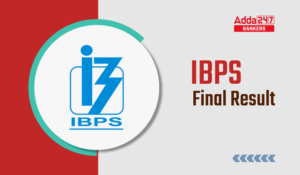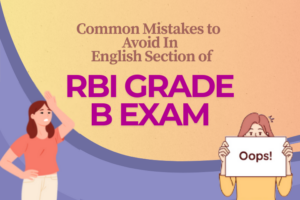Table of Contents
Reserve Bank Of India Governor Shaktikanta Das recently announced in a press conference that RBI will be increasing the WMA Limit for States by another 30%. As per an article published by The Economic Times-” This move is likely to rein in states borrowing costs as they would not bunch up auctioning of bonds. This is estimated to create a space for RS. 12000 crore for the state governments looking to raise money. The term to be notice here is WMA. To understand this news and to understand the impact of it, the basic understanding of this term is require. In this article, we will be discussing all about Ways And Means Advances (WMA), a term you must have read multiple times in newspaper but have hardly understood its impact.
Also Read,
| SBI PO 2020: Preparation Tips, Strategy, & Study Plan | Best Approach Towards Solving Error Detection In Banking Exam | How to Target SBI PO 2020 |
What is Ways & Means Advances?
Ways & Means advances is a basically a mechanism which is used by Reserve Bank of India (RBI) under the Section 17(5) of the Reserve Bank of India Act, 1934. This is basically a loan which is given by RBI to state government repayable in each case not later than three months from the date of making that advance’. This in no way means financing the state government. This mechanism is use to provide support to the state government in times of temporary financial emergency. It is used by RBI to provide a cushion to the States to carry on their essential activities despite mismatches on fiscal transactions and to avoid disruptions to the normal and necessary financial operations of the State.
There are no such provisions related to the maximum amount of the advance or the rate of interest to be charged on WMA. These matters are regulated between the RBI which act as their banker and the state government. Except Kashmir and Sikkim, all the State Governments have signed such agreements with RBI.
Also Check,
- World Heritage Day 2020: History, Importance, Theme
- WARRIOR | Banking Awareness Batch for SBI, RRB, RBI and IBPS Exams
- SBI PO Prime 2020 Online Test Series
- Lockdown 2.0 – What are Red, Orange and Green Zones?
Types of WMA
There are two types of WMA namely- Normal WMA and Special WMA. Normal WMA are refer to clean advances, while Special WMA are refer to secured advances provided against the pledge of government of India–dated securities. Special WMA operational limit for a state is subject to its holdings of central government dated securities up to a maximum of limit sanctioned. The RBI had already determined limits for normal and special WMA for each state as multiples of the prescribed minimum balance required to be maintained with the RBI by that state. These limits have been revised periodically as per the situation and requirement.
Given below is the table which states the Ways and Means Advances Limit of different State Government.
Ways and Means Advances Limits of the State Governments
|
(Rs. crore) |
|
Sr.No. |
State |
WMA -February 1999 (Pre-IAC) |
WMA March 1999 – based on IAC recommen-dations |
WMA February 2001 – based on GFS |
WMA – April 2002 |
% Change (Col. 6 over Col. 3) |
|
1 |
2 |
3 |
4 |
5 |
6 |
7 |
| Non-Special Category States | ||||||
|
1 |
Andhra Pradesh |
168.0 |
288 |
463 |
520 |
209.5 |
|
2 |
Bihar |
117.6 |
195* |
220 |
245 |
108.3 |
|
3 |
Chhattisgarh |
– |
82* |
91 |
100 |
– |
|
4 |
Goa |
16.8 |
24 |
25 |
50 |
197.6 |
|
5 |
Gujarat |
117.6 |
243 |
393 |
445 |
278.4 |
|
6 |
Jharkhand |
– |
51* |
57 |
75 |
– |
|
7 |
Haryana |
50.4 |
99 |
167 |
180 |
257.1 |
|
8 |
Karnataka |
134.4 |
228 |
331 |
375 |
179.0 |
|
9 |
Kerala |
100.8 |
144 |
215 |
225 |
123.2 |
|
10 |
Madhya Pradesh |
134.4 |
221* |
244 |
275 |
104.6 |
|
11 |
Maharashtra |
252.0 |
483 |
685 |
760 |
201.6 |
|
12 |
Orissa |
100.8 |
141 |
159 |
185 |
83.5 |
|
13 |
Punjab |
100.8 |
141 |
200 |
235 |
133.1 |
|
14 |
Rajasthan |
100.8 |
202 |
288 |
310 |
207.5 |
|
15 |
Tamil Nadu |
184.8 |
281 |
402 |
415 |
124.6 |
|
16 |
Uttar Pradesh |
285.6 |
531* |
559 |
630 |
120.6 |
|
17 |
West Bengal |
168.0 |
235 |
295 |
360 |
114.3 |
| Total |
2032.8 |
3589 |
4794 |
5385 |
||
| Special Category States | ||||||
|
1 |
Arunachal Pradesh |
16.8 |
28 |
35 |
50 |
197.6 |
|
2 |
Assam |
67.2 |
114 |
161 |
180 |
167.9 |
|
3 |
Himachal Pradesh |
33.6 |
59 |
92 |
115 |
242.3 |
|
4 |
Manipur |
16.8 |
25 |
38 |
50 |
197.6 |
|
5 |
Meghalaya |
16.8 |
25 |
30 |
50 |
197.6 |
|
6 |
Mizoram |
16.8 |
25 |
28 |
50 |
197.6 |
|
7 |
Nagaland |
16.8 |
26 |
40 |
50 |
197.6 |
|
8 |
Tripura |
16.8 |
31 |
46 |
55 |
227.4 |
|
9 |
Uttaranchal |
– |
19* |
19 |
50 |
– |
| Total |
201.6 |
352 |
489 |
650 |
||
| Total for all States |
2234.4 |
3941** |
5283 |
6035 |
||
Also Read,
| How to Master Reading Comprehension to Score Maximum Marks? | Importance of Spoken English and How to Improve it? | SBI PO Prelims Study Plan 2020 |
Interest Rate
The interest rate on WMA is set to be at or around bank rate (with small adjustment for different kinds of WMA for State Govt.) Overdrafting if any carries 2% higher interest. The time Duration is 10 consecutive working days for Central Govt. and 14 days for State Govt. The Amount ceiling Limits on WMA are fixed at the beginning of a fiscal year by RBI.
Also Read,
| What is Repo Rate ? | What is PMJDY? | CLR Vs SLR |
Minimum Balances
The minimum balance required which is fixed and to be maintained by Govt. on Fridays and at the close of the Govt.’s or RBI’s financial year shouldn’t be less than Rs.100 cr and on any other working day not less than Rs.10 cr. as well as, when 75% of WMA is utilised, the RBI may consider fresh flotation of market loans depending on the market conditions.
Click Here to Register for Bank Exams 2020 Preparation Material
Practice With,



 IBPS Final Result 2025 Coming Out Tomorr...
IBPS Final Result 2025 Coming Out Tomorr...
 Simple Tips to Avoid Common Mistakes In ...
Simple Tips to Avoid Common Mistakes In ...
 Important Topics & Shortcuts for IDB...
Important Topics & Shortcuts for IDB...


